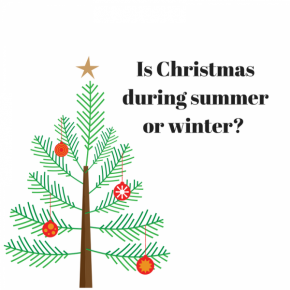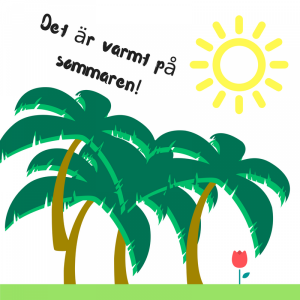Describing the Swedish weather
Sign up for free to get all information about private lessons and our available group courses (A1, A2, B2, B2, C1, C2)
Sign up for freeSign up for free to get all information about private lessons and our available group courses (A1, A2, B2, B2, C1, C2)
Sign up for freeWhen you hear the 'Swedish weather', are you thinking of the freezing cold? the warm Gulf Stream makes the climate much milder than you may expect. Spring, summer, fall (Autumn) and winter all have their own special personalities. Springs runs from March to May, summer from June to August, Autumn from September to November and Winter from the end of November to February. This lesson will cover grammar and vocabulary on the Swedish weather, seasons and sentences in regards to weather forecasting.
Take online language lessons with a professional teacher
Sweden's weather can be different depending where you are situated. The country can be divided into three big regions Götaland in the south, Svealand in the centre and Norrland in the north. Below will be examples of different weathers. 
Vad är det för väder idag? | How's the weather today |
| solig (det är soligt) | sunny (it is sunny) |
| regnig (det är regnigt) | rainy (it is rainy) |
| mulet (det är molnigt) | cloudy (it is cloudy) |
| snöig (det är snöigt) | snowy (it is snowy) |
| klart (det är klart) | clear (it is clear) |
| varmt (it is warm) | warm (it is warm) |
| blåsigt (Det är blåsigt) | windy (it is windy) |
| dimmigt (det är dimmigt) | foggy (it is foddy) |
| isigt (det är isiga) | icy (it is foggy) |
In Swedish, 'it is' (det är) will always come before the weather. Now look outside your window and write down what is the weather like in Swedish!
In Sweden there is no such things like the ''official first day of spring''. This is not because the seasons are so brief, however it is because seasons are not noted on the calendar. You somehow feel the season when it arrives. In Sweden the seasons are determined in accordance to a consistent week temperature reading. People know it is Autumn when it has been below 10°C for at least a 7 days non stop. This means that the season has changed.
Seasons |
|
|
|
| vinter | winter | på vintern | in winter |
| vår | spring | på våren | in spring |
| sommar | summer | på sommaren | in summer |
| höst | autumn | på hösten | in autumn |
Now it's going to get more complicated, we will writte sentences with both seasons and the weather. Pay attention and look at the pattern to avoid confusion. i.e;

Hej, vad är vädret kommer att bli som i morgon eftermiddag?
Hey, what is the weather going to be like tomorrow afternoon?
vädret sa att det kommer att bli soligt?
The weather forecast said it will be sunny.
Tack!
Thank you
If you want to find out the weather, you would use the first dialogue as a template. You would just need to adapt the question to your needs in terms of the context. On the other hand in order to ask for the present weather you would say hur är vädret (what is the weather like).
The second template would only be used if you wanted to know if a certain weather would occur on the same day.
Is it going to rain tomorrow? Kommer det att regna i morgon? how about looking at the forecast for tomorrow write down and practise saying what your weather will be like tomorrow. Below is a youtube video on weather vocabulary with pronunciation. See you later!